- Call us: 01444 237070
- Contact Us
- Stores
- Sign In / Register
-
- Back
- Used Cameras
- Used Accessories
- Used Lenses
- Used Video
- Used Film Equipment
- Used Stock Alert
- Used Blank Test
- Sell or Part Exchange
- Used Clearance
- Recently Added Used Equipment
- Park Picks
- All Used Black Friday Deals
- Faulty
- Trade-In
- Blog
- New in
- Call us
- Contact us
- Stores
- Sign in
- Categories
- Tips & Inspiration
- Reviews
- News
- Events
- Features
- Buying Guides
- Competitions
Why use a 35mm lens
In this feature we look why it’s a great idea to use a 35mm lens for a huge variety of photography styles. We compare 35mm vs 50mm focal width lenses as well as the advantages of shooting with a 35mm prime. We investigate the best options for camera brands including Canon, Nikon, Sony, Fujifilm, Leica and some superb third party offerings from Sigma, Tamron and ZEISS.
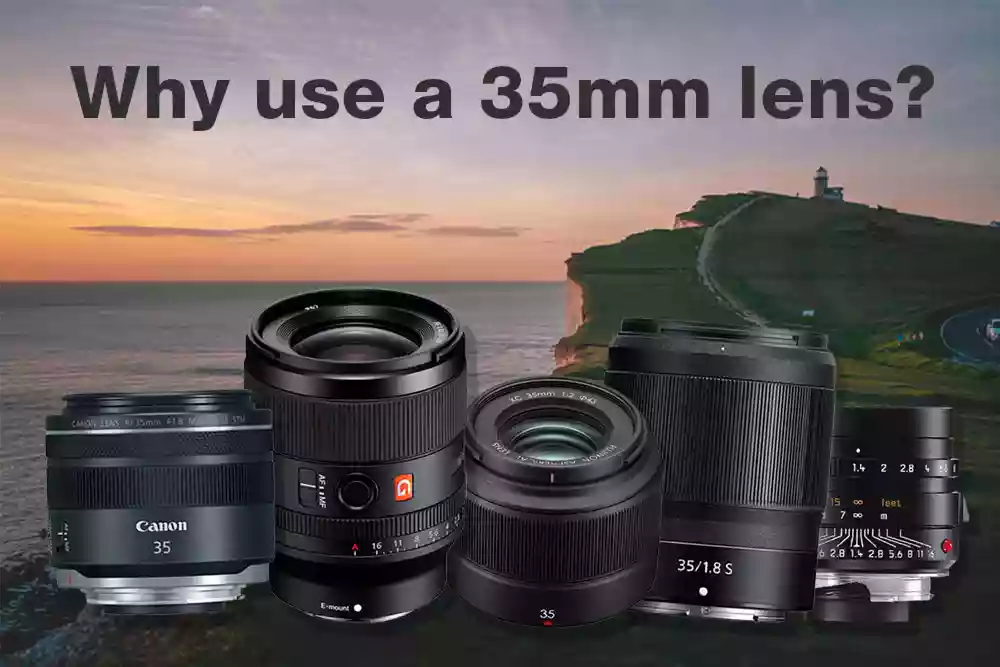
Table of contents
What subjects are a 35mm lens good for?
Best lens options for:
What does a 35mm prime lens mean?

Canon sample photo: EOS 5DS. 6 sec exposure at ISO 100
Lenses are categorised by their focal width and whether they are zooms or a fixed focal width, which is referred to as a ‘prime’. So a 35mm prime lens is simply a lens which only has a 35mm focal width and cannot be zoomed. 35mm just happens to be the same width as a full frame camera sensor, which is the same width. Perhaps it is this simple fact which makes this such a popular option for photographers of any skill level who shoot all types of photography and videography. Read on for details, samples and ideas of how you can build this classic versatile option into your own style of photography. Personally, I love 35mm and use this width prime on my camera often.
What’s the difference on a crop or full frame camera?

Leica sample photo: Summilux-M 35mm f/1.4 ASPH. 1/1500th sec. ISO 400. f/6.8
Full frame cameras will be using the full width of the lens which produce 35mm wide images on a full frame sensor. Cropped sensor bodies will make the focal width slightly narrower, making it around 53mm, depending on the camera brand. Typically a crop sensor will be around 1.5x smaller, so the focal range appears to be closer, or slightly more zoomed in.
For crop sensor users this results in a more standard 50mm width, which is the biggest competitor of a 35mm prime. They are similar, but the key differences do favour the wider option as we discuss below. Having a 50mm is no bad thing and many advanced or professional users will indeed enjoy both depending on what they are shooting.
What subjects is a 35mm lens good for

Nikon sample photo: Z 35mm F1.8 S. 1/200. ISO 1600 f/1.8
The human eye sees at approximately 43mm which gives us a great starting point for why we could use a 35mm lens. It is slightly wider than our regular vision, which is sometimes referred to as ‘standard width’ in photography. Capturing images which are slightly wider than standard can result in wider compositions with more in the frame for us to look at.
This gives us a lot of versatility as we will be composing things which we see normally, but with around 20% more in the frame. This is a central advantage of a 35mm lens, which leads to the diversity of subjects which can be captured effectively at this width.
Subjects which are best for this width include:
- Street photography
- Portraits
- Travel
- Architecture
- Landscapes
- General shooting
- Weddings and events
- Night photography
- Video
As we can see this is quite the collection of genres, making for an excellent general purpose option. Physically 35mm lenses will tend to be quite compact, relatively lightweight with features bright apertures. This allows the lens to gather more light, shoot faster and isolate subjects from their backgrounds if that is the desired effect. This combination opens up all of the avenues above, as well as other subjects too, such as close-up photography.
Being able to capture a lot in the frame with minimal distortion makes for an appealing choice for many photographers. Going wider to say 27mm, will often result in barrel distortion or perspective distortion when a wide lens isn’t perfectly level. This is far less apparent at 35mm. Naturally this benefits many subjects, particularly where there are straight lines in the shot, such as in street photography, architectural photography or where there are buildings in the frame.

Sony sample photo: FE 35mm F1.8. 1/80 sec. f/1.8. ISO 100
35mm vs 50mm comparison
Arguably 35mm and 50mm lenses provide similar results as they both fall into the standard category, but are slightly wider. If I had to choose between just one of these, I would probably go for a fast 35mm and these are the reasons why:
- Greater depth of field. With a wider (but not actually wide-angle) focal width we get more in sharp focus. When capturing several subjects this can be exactly what we require, for example with landscapes, street, architecture and travel images.
- Emotional connection with our subject. When shooting portraits (of humans or animals) we can typically get closer to our subject than when using a 50mm lens, because it is wider. Being close to your subject can create an emotional connection, which is harder to achieve when standing further away.
- We can fit more into the frame. A wider lens in its most simple terms fits more into the composition as mentioned above. More = better of course! Ok so that isn’t true at all, but when we want more than 50mm gets us all the better.
- You can crop but you cannot add pixels. Following on from number three above, if we do want a tighter composition, similar to a 50mm lens, we can crop-in during post production. We’ll never be able to crop-out if we used a 50 though!
- Lighter and more compact. On the whole, 35mm lenses are somewhat smaller and lighter than their 50mm counterparts. There are exceptions and all lens models are different, but the availability of incredibly small and light options gives us the choice.
- Tell more of the story. For environmental portraits, events and other subjects we might want to show more of the surroundings to capture more of the story. In these cases a wider lens is really useful. If we are too close to our subject we can miss vital supporting elements around the subjects.
Best 35mm lens options for these camera brands

Canon
|
Lens model |
What we love |
Price |
|
Canon are of course masters of their DSLR system and this is an EISA award winning lens, which delivers across all fronts. Packed with 14 elements in 11 groups gives a premium feel with gorgeous results every time. |
£1,789.00 |
|
|
Sigma are renowned for the quality of their ART series of optics and this is no exception. It is bright, fast and comes packed with optical elements to squeeze high resolution and superb detail |
£649.00 |
|
|
Adding versatility to an already versatile option thanks to dedicated macro close-up functionality for EOS R mirrorless cameras. Check out the RF 35mm Flickr group with real world user examples showing what can be achieved with this newer model. |
£509.00 |
We’ve picked out three of the best 35mm lenses for Canon cameras. A native Canon own brand model, which happens to be one of the best in class as well as Sigma Art for DSLR and another Canon own mirrorless option. Users rave about all three and with good reason as they are all an excellent choice.
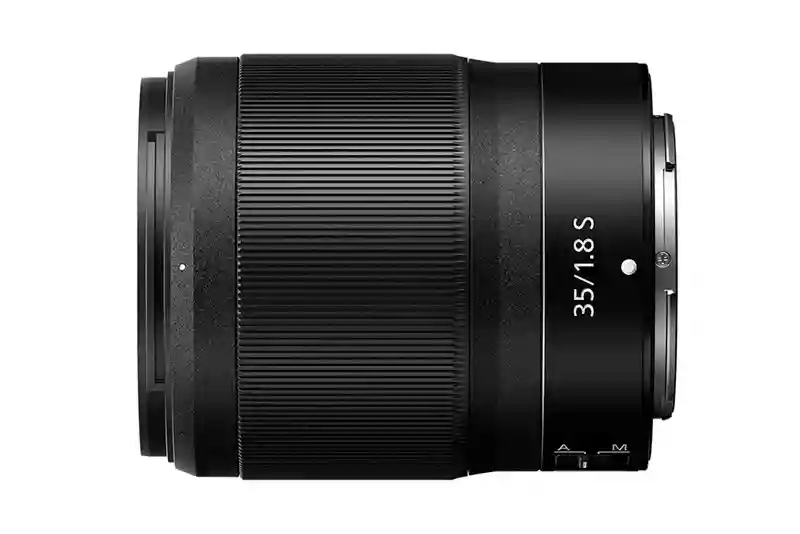
Nikon
|
Lens model |
What we love |
Price |
|
Ideal for full frame or crop sensor Nikon DSLR this is an affordable and bright aperture option. |
£455.00 |
|
|
This is a flagship Art series lens and Sigma has packed high quality elements into a reasonably compact frame. We love this! |
£649.00 |
|
|
Nikon has been busy developing excruciatingly sharp optics for their mirrorless system. This model is just that, sharp, fast and provides excellent results. |
£749.00 |
The 35mm lenses we’ve picked out fit Z-mount mirrorless and DSLR F mount cameras. Once again the Sigma Art is one of our picks as it is excruciatingly sharp and effective. But it is not the smallest option here with the timeless AF-S taking that crown. Z System users will be thrilled with the S-Line option as this is one of Nikon’s best lens ranges ever.
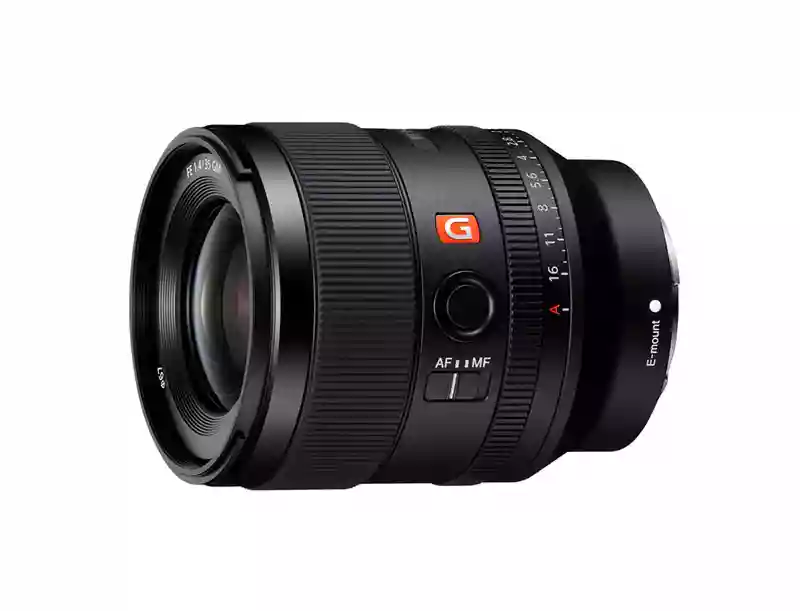
Sony
|
Lens model |
What we love |
Price |
|
This lens weighs only 280g but punches well above its weight. A bright aperture and smaller size make this a great all rounder for various skill levels. |
£549.00 |
|
|
This high end model is compact, lightweight and works overtime to capture light where we only see darkness. The fast aperture is ideal for anyone shooting street, during night or any low light situations. Definitely a smash hit with ZEISS optical design. |
£999.00 |
|
|
G Master lenses take no prisoners and the new 35mm maintains this as one of the highest quality prime models in the E mount range. |
£1,499.00 |
|
|
You might have heard some well known Youtube street photographers rave about this lens and with good reason. The price is low but the quality high and it’s one of Samyang’s many excellent options for Sony cameras. |
£359.00 |
|
|
When Sigma make flagship lenses we just know the reviews will be amazing. That is the case and this model appears throughout this list as it is such a winning combination of quality and speed, ideal for anyone from enthusiasts to professionals. |
£649.00 |
Sony’s E mount mirrorless system users are spoilt for choice with these five primes making our list. All of these offer fast aperture’s of between f/1.4 and f/1.8 as well as compact size, fast AF and a variety of price points to suit any budget.
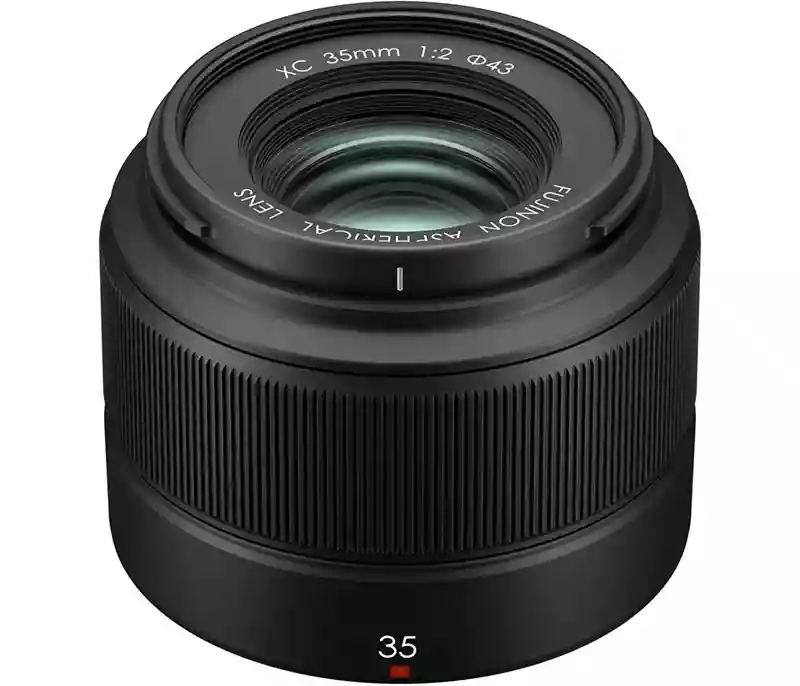
Fujifilm
|
Lens model |
What we love |
Price |
|
This may be the most affordable model from Fujifilm but with an f/2 aperture it still shines. The lens weighs a paltry 130g yet somehow has 9 optical lens elements delivering excellent quality. |
£169.00 |
|
|
This is Fujinon’s top-end prime and that shows in the results. The bright light gathering optics capture images even when light is virtually non existent. Users can take this anywhere as it measures just 65mm x 50mm. |
£529.00 |
|
|
Despite sporting a slightly slower aperture than the f/1.4 model the f/2 has a 9-bladed aperture which results in smooth round bokeh. Weather sealing and lightning quick focus make this an excellent choice for any user. |
£379.00 |
Fujifilm 35mm lenses fit X System cameras which results in an equivalent 53mm focal width. Let’s just say that any one of these will be a killer option for shooting any of the subjects mentioned above, but personally I would pick the f/1.4 just because it is so good and brighter than the other two.
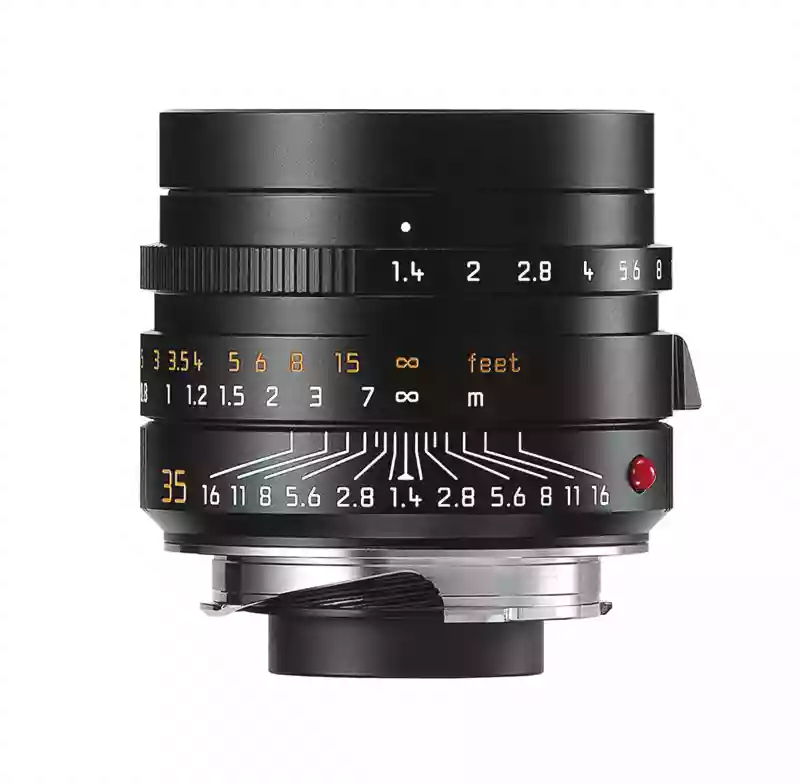
Leica
|
Lens model |
What we love |
Price |
|
With 11 aperture blades photographers using this lens can isolate their subject and create beautiful, creamy out of focus backgrounds. |
£2,700.00 |
|
|
The character of the mid range Biogon provides users with beautiful results. Handholding is no problem thanks to the fast aperture and compact nature of this classic model. |
£889.00 |
|
|
An eminently affordable model for M system combining ZEISS useability, optics and manual controls with the experience of shooting Leica rangefinders. |
£649.00 |
|
|
Redesigned from the original 1960’s version and wow what a stunner. Results deliver that unique style associated with Leica cameras throughout the years. |
£4,350.00 |
Leica lenses for Rangefinder cameras are achingly good, particularly from the Summilux series and they can also be used on Leica SL, T, and TL cameras thanks to the Leica M Adapter L. Leica perhaps claim the longest heritage with their original 35mm lenses being used for many decades, sometimes by incredibly famous photographers. If you are lucky enough to own a Leica camera and don’t already own one of these already, we recommend you invest straight away, you won’t be disappointed.
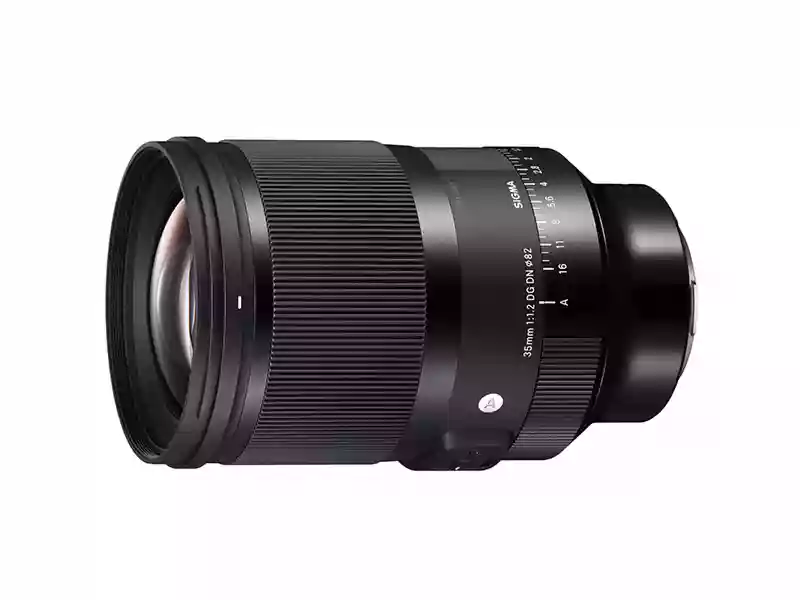
L-mount
|
Lens model |
What we love |
Price |
|
This is the 4th appearance of Sigma’s Art series 35mm lens. What can we say, it’s fast, sharp, packs high rendering capabilities and is very reasonably priced for a flagship model. You will not be disappointed with this prime. |
£649.00 |
|
|
This model for full frame L cameras comes packed with 13 elements of which 5 are special optics. The results are outstanding leaving no question about Leica’s commitment to the L mount. |
£3,900.00 |
|
|
New for the L Mount this model draws on decades of optical experience to deliver something rather special for the new system. A bright aperture and aspherical optics complete this beautiful model. |
£2,000.00 |
With the relatively new full frame L mount there are already these three fantastic options from Leica and Sigma who form part of the alliance. Sigma features here once again with the Art thanks to providing such superb results.
Conclusion
There is an awful lot to love about using a 35mm lens, particularly if mounted on a full frame camera body. We get a lovely fast aperture, high quality optics and gorgeous results from a slightly wide standard focal width. Primes win over zooms for many subjects where we want to engage with the craft of making images more. With a zoom we can simply get closer or further with a twist of the zoom ring, but with a prime we move around more, work harder and become more involved in image making. This can over time yield better results as we have to look, compose and think more.
Having bright apertures of f/2 or even brighter gives us a lot of options for shooting in low light or for isolating subjects and helps to produce those lovely bokeh balls in the background. If you’ve never shot with a 35mm we throughly recommend giving one a try. Why not take a peek at our used camera lenses to see if there is an option available for your system, all of which come with a six month warranty.
More detailed information can be found with our Sony FE 35mm f/1.4 GM Lens review and Samyang 35mm f/2.8 for Sony E review here.
We’ve also written related guides including best buys for street photography and best gifts for portrait photographers which you might find useful. Let us know what you think.
Share this post:
By Nick Dautlich on 10/02/2021
Nick Dautlich
Senior Content Writer and Product Reviewer
Nick Dautlich is the Senior Content Writer and Product Reviewer at Park Cameras, with over 15 years of photography experience. A Sony Imaging Professional and expert reviewer, Nick has worked with major brands such as Canon, Sony and Nikon. His work is also featured on Vanguard World UK’s website, Capture Landscapes, and Shutter Evolve. Nick’s photography includes National Trust projects and magazine covers and he is passionate about landscapes and storytelling. Nick also enjoys hiking and teaching his children about nature. Learn more on his profile page.

Trade in your old equipment
Fast and easy trade in service ensures your old gear is collected efficiently and you are paid quickly! It's very simple to trade in your unwanted photography gear. Just head over to our dedicated Sell or Part Exchange page, fill out the details, and we'll get back to you with an offer for your old gear. Take the cash, or put it towards the cost of your new gear. It's up to you! Find out more
sign up to the newsletter
Keep up to date on the latest photography news, events and offers. Sign up now
